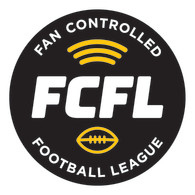Fan Controlled Football Creates Its Own Audio Environment
With fans calling the plays, sound design becomes critical
Story Highlights
The recently wrapped inaugural season of Fan Controlled Football (FCF) could be reduced to a single, existential question: what if Steve Jobs had reinvented football instead of the telephone? On screen, FCF is a hybrid of, on one hand, a traditional football production, with wide and close camera shots, announcers calling play-by-play and color, and athletes scrambling on a gridiron and celebrating touchdowns; on the other hand, it’s ESPN meets Twitch, with a bit of Terminator tossed in.
Quarterbacks and other key players are fitted with lavalier microphones during the game, including live in the huddle right up to the snap, while Sennheiser 416 shotgun sideline mics capture on-field and other ambient audio. Instead of crowds and production music as the foundation of the games’ sound, however, FCF has the equivalent of Hollywood-level sound design taking place in real time.
“All the audio has to be in real time, including the sound design, because it’s the fans that are calling the plays that move the game along,” explains FCF Chief Gaming Officer Patrick Dees, the third voice in the production’s announcer booth interacting with fans through Twitch.
The shows are done in stereo, with a surround effect provided by Ambidio Inc., a Los Angeles-based audio-software developer whose codec creates an immersive sound effect using just stereo speakers. The technology — backed by Grammy Award-winning artist will.i.am and others, launched in 2016, and nurtured in the 2017 Disney Accelerator — works with Hollywood postproduction studios, including Skywalker Sound.
At the tactical level, FCF has four Sanken COS-11D lavalier microphones and Letrosonics LMB beltpacks on players at any given moment on the field, with an additional seven shotgun and dynamic mics for ambient audio/game sounds, Dees says.
“The audio is really important for a new league like this,” says C.J. Bottitta, a game and event producer hired by Crazy Legs Productions, the Atlanta-based company that produces the games. “It was a lot of player and referee audio this season, and, every third series, they’d bring in the back-up quarterback, so there’s a variety of voices. It’s worth pointing out that the quarterbacks aren’t calling the plays; the fans are. What you’re hearing is a lot of conversations in the huddles around that.”
Audio is managed by an A1, an effects submixer (to help manage the multiple team-owner voices on live Zoom calls incorporated into games), and two A2s on the field. Because it’s largely real time, notes Bottitta, whose background is in traditional sports broadcasting, the conversation around profanity began early on, focused less on the legalities of it — streaming platform Twitch is not subject to FCC oversight — and more on finding a balance between being family-friendly and provocatively edgy. The general rule is, no profanity on taped replays and beeping out the worst of it otherwise, with the beep itself a reminder that it was there.
“If we pick up a live ‘m-f’ occasionally,” he says, “then that just goes out. After all, Marshawn Lynch is one of our celebrity owners, and he has been known to drop a bomb now and then.”
Eyes and Ears Open All the Time
It’s not just the language that keeps the audio techs on their toes. Rule changes happen often and sometimes suddenly during the season, and, instead of coin tosses to determine primacy of actions, refs oversee on-field rock-paper-scissors sequences, which have a unique sound. The techs also have to be alert for visual cues: for instance, when a referee lowers their mask, it’s an indication they’re about to make a statement or a ruling.
There were no fans in the Infinite Energy Arena in Duluth, GA, for the inaugural season, due to COVID restrictions (although a player’s wife did come in to sing the national anthem before one game). Instead, a Wendy’s-sponsored “confessional” booth was set up on the sideline, originally to serve as a place to interview athletes as a replay took place on screen but quickly mutating into a celebration cam used live in the broadcast.
“When a team scores or the defense makes a big play, everyone runs down and celebrates in front of the camera,” says Bottitta. “The confessional booth was originally slated to go straight to tape and then [be run] as a replay; that camera wasn’t even on our switcher. But, very quickly, we had to pivot because we realized these guys are running in there immediately to celebrate and we decided to go live with it.”
Dees hopes to have between 500 and 1,500 fans at games next season. According to Bottitta, plans for deeper fan engagement also include new ways to use audio.
“It’s really a fan-takeover sport,” he says. “And noise is always great for that.”

